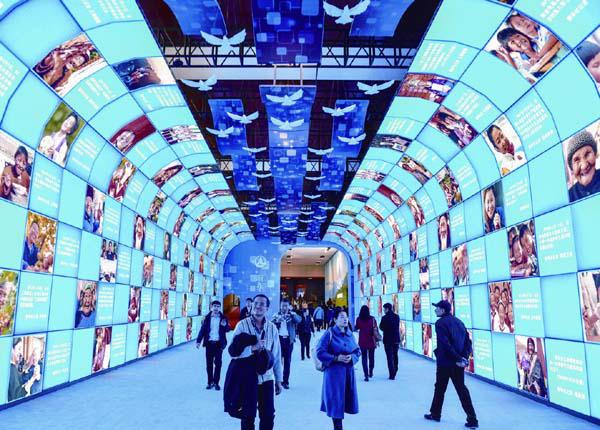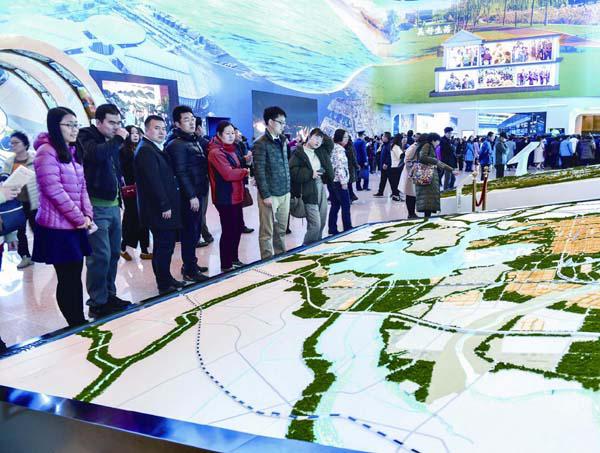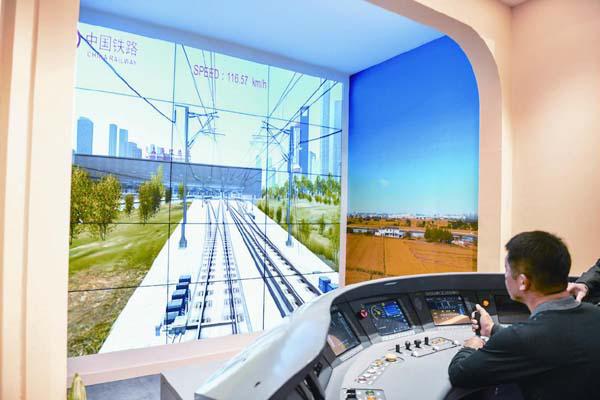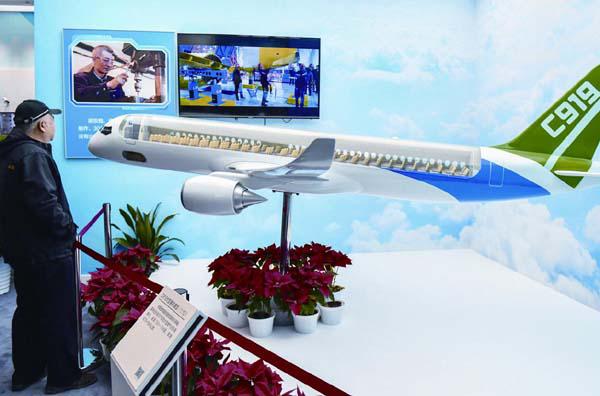Recording the Times
2018-12-15ByYuanYuan
By Yuan Yuan
From giant models of spacecraft and submarines to gadgets such as ball-point pen refi lls, an on-going exhibition in Beijing commemorating the 40th anniversary of the reform and opening up rolls out a panoramic picture of Chinas achievements in the past 40 years with photos, texts, videos, miniature models and interactive displays.
Named Great Change, the exhibition has six sections showcasing the history, accomplishments and experience of reform and opening up, and the strategic decisions and plans made by the Communist Party of China (CPC) Central Committee with Xi Jinping at the core since the 18th CPC National Congress.
President Xi visited the exhibition at the National Museum of China on November 13, the opening day, stressing that the exhibition should help build a common understanding, accumulate consensus, raise morale and foster solidarity and a striving spirit.
Tremendous changes
Since it was open to the public, the exhibition has attracted people from all over the country. Visitors time travel by watching the exhibits refl ecting the changes that took place in the country over the past 40 years.
At the entrance of the exhibition stand the imposing models of the countrys Long March rocket series and the Tiangong space station.
“The speed in which my life has changed in the last 40 years is just like a rising rocket,”58-year-old Wei Deqi from Dujiangyan City in southwest Chinas Sichuan Province, told Beijing Review. “The change is more than what I ever dared to imagine.”
Wei and his wife, both retirees, came to Beijing specially this time to see the exhibition after hearing the news of its opening several days before. As an avid traveler, Wei always carries a national flag in his backpack while touring around the country.
“We are very proud of what our country has achieved in the past four decades,” he said. “Our economy has developed at a stunning speed and now our environment is under better protection after the government advocated that lucid waters and lush mountains are invaluable assets.” Wei said proudly that among the 53 world cultural heritage sites in China, they have visited more than 40 and are on their way to visit more.
A 30-year-old woman surnamed Zhang from Qingdao in east Chinas Shandong Province said what impressed her most about the exhibition was the section on space exploration.
“Our country has made remarkable efforts to explore space in the past decades and has made tremendous progress in this fi eld,” she said. “Each time our country launched a new satellite or spacecraft, my family would sit in front of the TV and watch together. We were all thrilled at the countdown moment.”
Zhang is currently on a business trip to Beijing and spared half a day to visit the exhibition. “Without visiting this exhibition, it would be hard to know in such a vivid way all the great changes that reform and opening up has brought to our country,” she said.
Looking forward
A 38-year-old woman surnamed Wu from Guangzhou City in south Chinas Guangdong Province is also on a business trip to Beijing and also took time out to visit the exhibition.
“I was born in 1980, right after our country made the decision to start reform and opening up,” Wu said. “My father always said that his generations role was to fight and construct, while my generations is to enjoy what they achieved. It is true in a way.”
Guangdong has always been on the forefront of reform and opening up. “The Hong Kong-Zhuhai-Macao Bridge was just recently put into official operation, marking a new milestone for reform and opening up in Guangdong,” Wu said. What impressed her most at the exhibition was learning that China can now produce the steel used at the tip of a ball-point pen. In addition, China also produces steel as thin as 0.02 mm.
“I am looking forward to seeing the progress China will make in the coming years and am very confident about the Made in China 2025 plan,” she added.
A Beijing local surnamed Huo came to visit the exhibition with her father, who is suffering from Alzheimers disease.
“Since the exhibition shows the latest drugs developed to cure some major diseases, we are here to check what the newest treatment for my fathers disease is,” Huo said. “We were glad to find out that a new drug developed by a domestic company is undergoing the fi nal round of testing and is about to come out.”
A section displaying the changes in peoples clothing in the past 40 years attracted many visitors. “My father said when he was young, a wool jacket was a luxury for him,” said Zhang Lei, a college student from Hebei University born in 1997. “My fathers generation has a deeper impression of the great changes over the past 40 years. Our generation may not be so impressed by the sharp contrast they always mention.”
However, he insisted, “What we are after now is certainly not a wool jacket, but we have our goals. For me, I want to do something meaningful to improve myself and to make more contributions to my country.”
As a major of Environmental Art Design, Zhang was greatly impressed by Haiers smart home layout at the exhibition. “I got some inspiration from that section and think maybe that is what I want to do after graduation,” he concluded.
Official figures show that during the first week of the exhibition, a total of 290,000 people visited the exhibition, leaving messages of more than 450,000 words.


